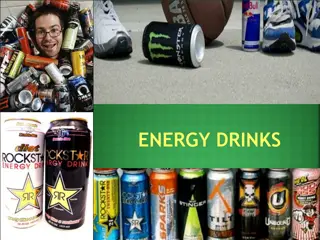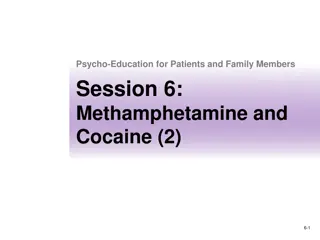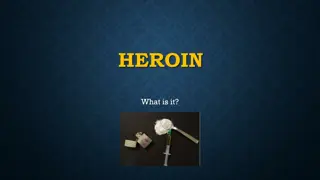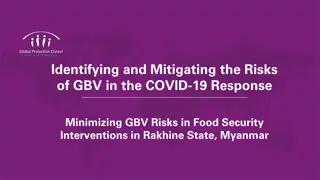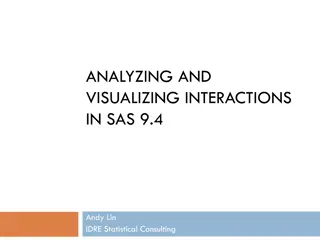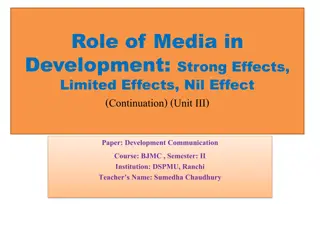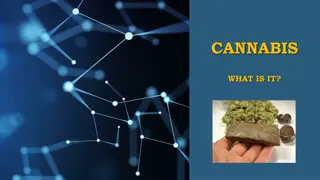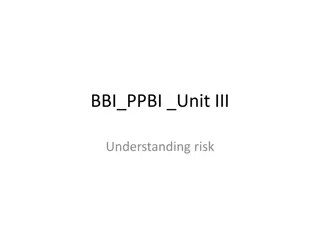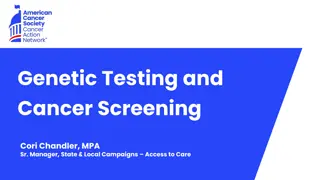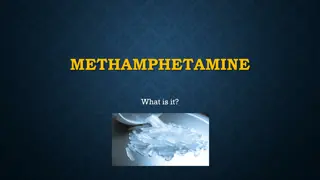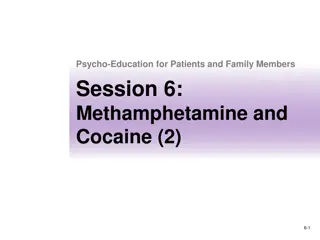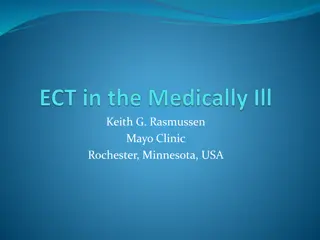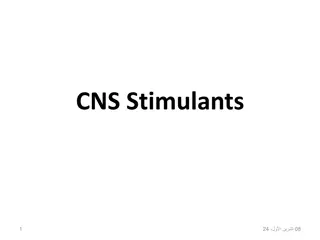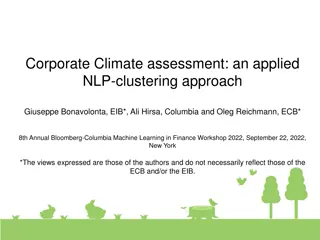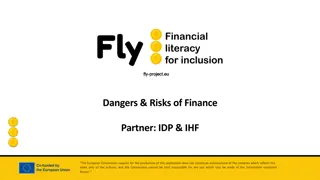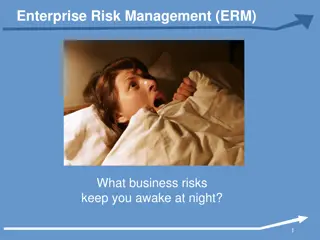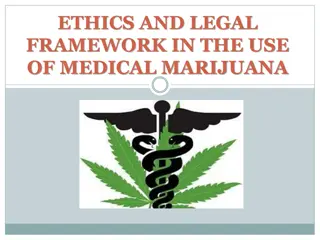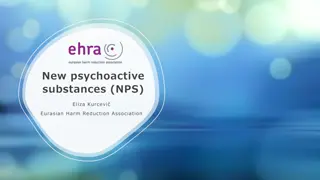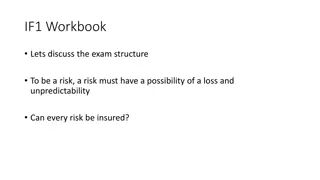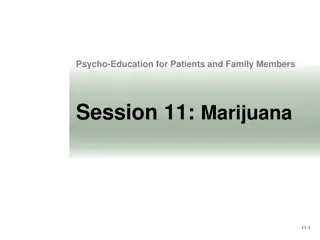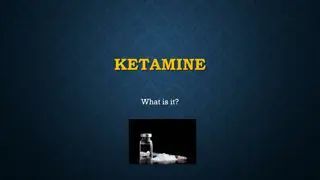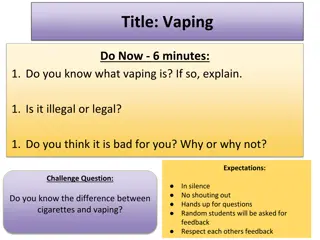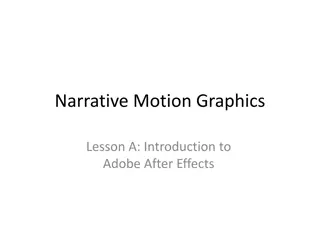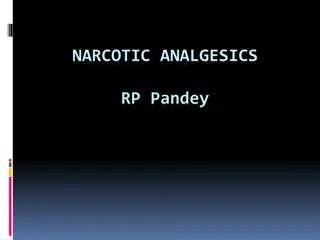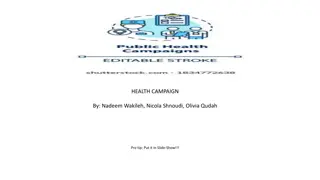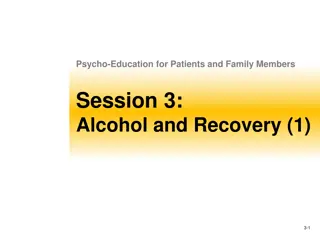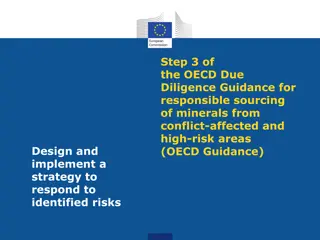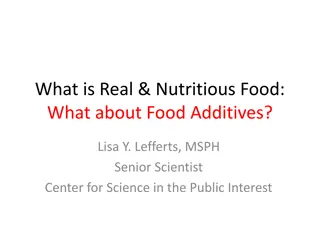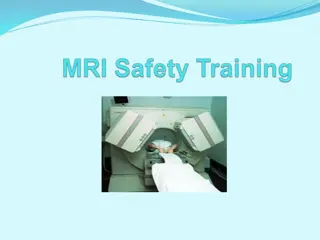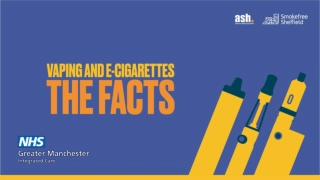Understanding GHB, GBL, and 1,4 BD: Types, Effects, and Risks
GHB and GBL, known as G drugs, are controlled substances impacting brain receptors similar to alcohol. They induce varying effects such as euphoria, relaxation, and sedation. Overdosing on these drugs can be life-threatening due to their fine margin between desired effects and toxicity. Combining G drugs with stimulants like MDMA increases overdose risks. Harm reduction strategies include precise dosing, avoiding sharing, and carrying protection.
Download Presentation

Please find below an Image/Link to download the presentation.
The content on the website is provided AS IS for your information and personal use only. It may not be sold, licensed, or shared on other websites without obtaining consent from the author. Download presentation by click this link. If you encounter any issues during the download, it is possible that the publisher has removed the file from their server.
E N D
Presentation Transcript
G WHAT IS IT? G is a term given to the drugs GHB (gamma hydroxybutyrate) and GBL (gamma butyrolactone). GBL converts to GHB when consumed.
WHAT IS IT AND WHAT DOES IT DO? GBL is an industrial solvent and paint stripper. Both GHB and GBL are controlled drugs under the Misuse of Drugs Act. G drugs impact the same receptors that alcohol effects in the brain. They are depressant type drugs and affects vary between people. One person could feel euphoric and confident and another can feel sedate. It is known to be a similar experience to being drunk. It has many different names; GBL, GHB G, Gina, Geebs, Liquid E.
THREE MAIN TYPES GHB odourless, oily liquid with a slightly salty taste. Usually sold in small bottles or capsules. can come as white powder but rare. Sometimes G can be bought already mixed taken pure, it can taste unpleasant and may cause burns. Effects typically occur 15-20 minutes after use and can last four hours or more depending on the person and their consumption. GBL liquid with chemical smell and taste. Absorbed faster in the body and can be more potent that GHB. Reported to taste and smell like a solvent, such as paint stripper/nail varnish.
THREE MAIN TYPES CONTINUED AND EFFECTS 1,4 BD (Butanediol) used less frequently and used in industrial domestic products. Usually taken mixed in with soft drinks. Less often snorted. Very dangerous to inject not recommended. Creates feelings of euphoria, relaxation, sociability, sleep aid, increased libido and enhanced disinhibition and greater confidence. Mild withdrawals coming down include loss of body control, anxiety, aggression, paranoia, confusion, difficulty concentrating, twitching, vomiting, audio and visual hallucinations and withdrawals can last up to 12 days.
DEPENDENCE AND OVERDOSE A dependence on G can happen very quickly. It is physically addictive and not recommended to stop using. It requires a weaning off period or can be life- threatening. Because of its nature, there is little difference (less than a millilitre) between the amount required to feel its desired effects and the amount that causes an overdose. Because it also takes some time to experience its effects, people can think it s not working and take more. The risk of overdose with G, therefore, is quite high. Death can result from toxicity or withdrawal. Effects are similar to alcohol and benzodiazepines. They can result in someone becoming incoherent or comatose leading to sexual assault risks for those taking it or being spiked with it, particularly in club settings.
HARM REDUCTION Using G with other stimulant drugs such as MDMA, cocaine, mephedrone and crystal meth (Tina), can make a person feel more awake, increasing the risk of overdose. Always carry a condom and get STI checked regularly. Always premeasure out G very carefully each time. Avoid swigging from a bottle. Prepare you own and don t use anyone else s G. Use a glass eye dropper, a clean syringe barrel or pipette that has measurements in millilitres avoid teaspoons, containers or caps that can only guestimate the amount. Prepare it before you go out and only take what you need. Don t bring anymore with you in case you are tempted to take it.
HARM REDUCTION Start slow and go low. Wait until you feel the effects and wait at least four hours before taking another dose. G affects memory set alarm reminders of when you last took it to ensure ample time between dosing. Avoid snorting and particularly injecting as it is very dangerous to consume this way. Avoid mixing G with alcohol. This can delay the effects of G and increase risk of going under/overdosing. Mix with water, soft drinks or juice. Avoid using G with other drugs. Sedatives such as ketamine and benzodiazepines pose an overdose risk. Cocaine, crystal meth and stimulant drugs taken with G, increases paranoia, hallucinations and aggression. HIV medications can increase the effects of G. Advisable to use lower dose.
HARM REDUCTION Avoid taking G if you have high blood pressure, epilepsy, convulsions, heart or breathing problems, depression or panic attacks. Remember that effects vary between people. Tolerance builds quickly requiring higher doses. Keep track of your tolerance level. Even if you have stopped only for a short period, restarting on a low dose can still cause an overdose. Dependency does not protect from an overdose of G. Use in the company of trusted people and not alone. Ideally with someone who can monitor your usage and after-effects. Store G safely. You can add food colouring to easily identify G. Don t leave it around in plastic bottles where it could be mistakenly consumed.
HARM REDUCTION Don t suddenly stop taking G. If you wish to stop using G, contact a professional, G or local drug service. Withdrawal needs to be a slow, supervised, tapered process. Withdrawals from G can cause serious mental and physical effects. If you miss a dose or run out and don t have the ability to get more, go to your local hospital if you are experiencing withdrawals from G and have no G. Seek medical help if needed. Don t try to use other drugs to reverse effects and don t assume someone will sleep it off. If someone has had too much, seek medical assistance immediately. G leaves the system quickly. Carry a G card so medics know what you have taken. Write G on your hand or wrist where it can be spotted if you don t have a card.
FURTHER INFORMATION If someone has gone under on G. Place them in recovery position if you know how. Or on their side to prevent choking. Seek medical help from 999/112. Stay with the person. Don t take any more drugs and be truthful with medics. If available, give the medics the substance that has been taken. Contact your local services for help. Services map: https://www.drugsandalcohol.ie/services_map www.drugs.ie cris@mqi.ie tiglin.ie livinglifecounselling.com
SOURCES/REFERENCES drugs.ie (2016) G factsheet. Dublin: drugs.ie. Available at https://drugs.ie/ghb Drugs.ie [Last Accessed] 03/01/2024 Images free to use and share commercially: Google.ie For more information follow the link below; HRB National Drugs Library (2024) Drugs and alcohol factsheets



